Understanding Sharpening Angles
Understanding sharpening angles is critical for knife performance. Typically, knives are sharpened between 20° to 30°, with 10° to 15° being too low. Inconsistent angles lead to dull edges and reduced efficiency.
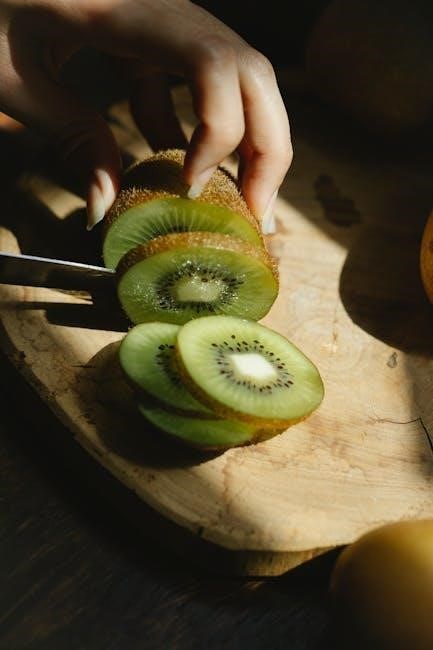
Importance of Angle Accuracy
Accurate angle control is vital for effective knife sharpening. The angle determines the sharpness and durability of the edge. A misaligned angle can result in a dull or uneven blade, reducing its performance. Consistency ensures the knife retains its cutting efficiency; For most knives, angles between 20° and 30° are ideal, with specific applications requiring narrower ranges. Inconsistent angles can lead to a poorly sharpened edge, making the knife less effective. Using angle guides helps maintain precision, preventing common mistakes. Proper angle alignment also extends the knife’s lifespan by avoiding excessive wear. Thus, mastering angle accuracy is essential for achieving razor-sharp results and maintaining knife longevity.

Common Sharpening Angle Ranges
Knife sharpening angles vary based on the blade’s intended use. Chef and kitchen knives typically range between 20° and 30°, providing a balance of sharpness and durability. Hunting knives often use steeper angles, around 25° to 35°, for robustness and edge retention. Fillet and precision knives may use narrower angles, such as 10° to 15°, for finer cuts. A total edge angle of 23° is common for outdoor knives with blades up to 2.5 mm in thickness. Softer steels are sharpened at steeper angles, while harder steels use lower angles for improved performance. These ranges ensure optimal cutting efficiency and longevity for different applications.
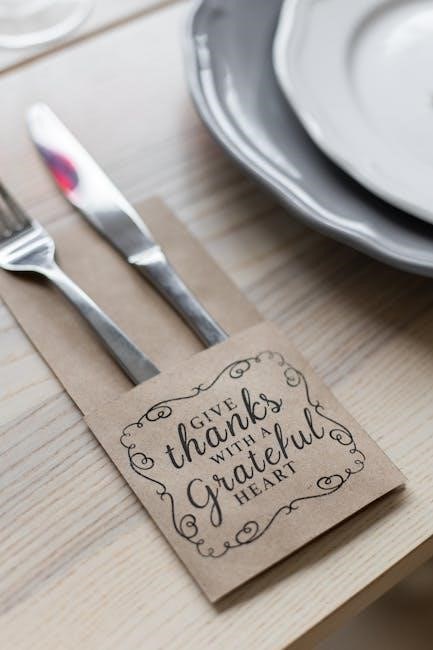
Types of Angle Guides
Angle guides come in various forms, including protractor methods, dedicated angle tools, and homemade templates. Each offers precision for maintaining consistent sharpening angles, catering to different skill levels and preferences.
Protractor Method
The protractor method is a simple, cost-effective way to measure sharpening angles accurately. By marking the desired angle on a thin piece of wood and cutting it, you create a reusable template. This ensures consistency across sharpening sessions. The protractor method is particularly useful for homemade setups, offering precision without specialized tools. It’s ideal for those who prefer a hands-on approach. However, maintaining consistent angle placement during sharpening can be challenging for inexperienced users. Despite this, it remains a popular choice for its affordability and effectiveness in achieving precise blade angles.
Dedicated Angle Guide Tools
Dedicated angle guide tools are designed to simplify the sharpening process. These tools hold the knife at a precise angle, ensuring consistency and accuracy. They are particularly beneficial for maintaining the correct edge angle, especially for users with less experience. Many guides feature adjustable settings, allowing customization for different knife types. Some models include sensors or alignment indicators for enhanced precision. While they may require an initial investment, dedicated angle guides offer long-term benefits by preventing common sharpening errors. They are versatile, working with various sharpening stones and steels, making them a practical choice for both professionals and enthusiasts.
Homemade Templates
Homemade templates are a cost-effective alternative for maintaining precise sharpening angles. By using a protractor, you can mark and cut a thin piece of wood or plastic to create a custom guide. This method allows for easy customization to suit different knife types and angles. Many DIY enthusiasts find this approach satisfying, as it enables them to tailor their tools to specific needs. While it requires some time and effort, homemade templates are a practical solution for those on a budget or who enjoy hands-on projects. They also serve as a reliable backup for dedicated angle guides, ensuring consistency in sharpening.

Choosing the Right Angle for Your Knife
Selecting the right angle ensures optimal performance for your knife. Different knives require specific angles, ranging from 20° for general use to 30° for precision tasks, enhancing their effectiveness.
Chef and Kitchen Knives
Chef and kitchen knives typically require a sharpening angle between 20° to 30°, with 20° being the most common. This angle balances sharpness and edge durability, making it ideal for daily kitchen tasks. A 20° angle is recommended for general-purpose use, ensuring the knife can efficiently cut through various foods without becoming too delicate. For heavier tasks, such as chopping, a slightly steeper angle, around 25°, may be more effective. Consistency in maintaining this angle is crucial for achieving a razor-sharp edge. Proper angle selection and maintenance ensure the knife performs optimally, whether for precision slicing or robust chopping, making it a versatile tool in any kitchen setting.
Hunting and Outdoor Knives
Hunting and outdoor knives typically require a steeper sharpening angle, often between 25° and 35°, to withstand rugged tasks like cutting through dense materials. A 30° angle is commonly recommended for its durability and sharpness balance, making it ideal for fieldwork. Softer steel blades may benefit from a slightly steeper angle, around 35°, to maintain edge retention. However, harder steels can perform well at lower angles, such as 25°, for precision cuts. Consistency in angle maintenance is key to ensuring the knife remains reliable in challenging outdoor conditions. Proper angle selection enhances the knife’s ability to handle heavy-duty tasks while maintaining sharpness for precise cuts when needed.
Fillet and Precision Knives
Fillet and precision knives require a sharper, more precise edge, typically achieved with a narrower sharpening angle. A common range is 10° to 20°, depending on the knife’s intended use. For filleting tasks, such as handling fish or meat, a lower angle (around 15°) ensures a flexible and razor-sharp edge. Precision knives, often used for intricate cuts, may benefit from an even narrower angle, around 10°, to maintain sharpness and control. However, extremely low angles can make the edge delicate, so finding the right balance is crucial. Using an angle guide helps maintain consistency, ensuring the knife performs optimally for its specific purpose. Proper technique and angle selection are vital for achieving the desired results with these specialized blades.
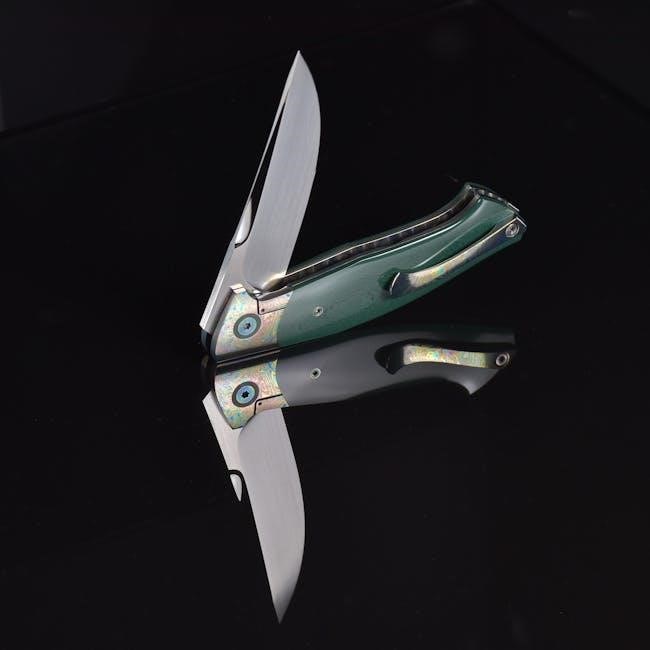
The Sharpening Process with Angle Guides
Using angle guides ensures precise sharpening by maintaining the correct angle across the blade. Place the knife at the desired angle, align the guide, and stroke smoothly across the stone for consistent results.
Setting the Angle
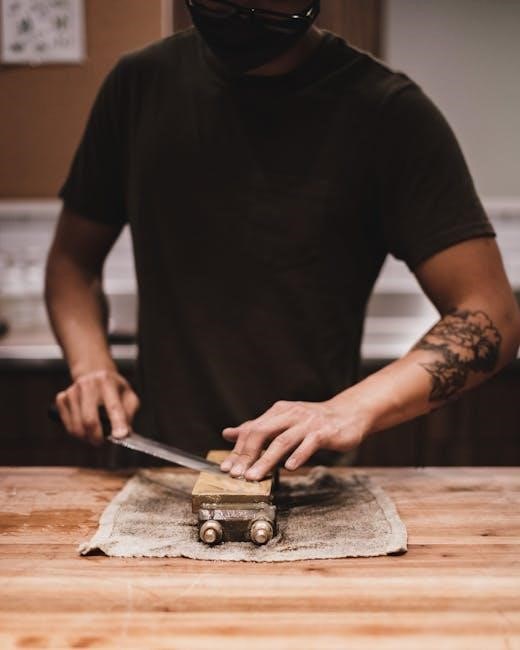
Setting the correct sharpening angle is essential for achieving a razor-sharp edge. Begin by determining the appropriate angle for your knife, typically between 20° and 30°, depending on its use. Use a protractor or dedicated angle guide to mark the desired angle on the knife’s edge. Place the knife on the sharpening stone, aligning it with the guide or template. Hold the knife firmly, ensuring the bevel maintains contact with the stone. Light pressure and smooth strokes are key to maintaining consistency. For novice sharpeners, angle guides can be particularly helpful in preventing errors. Properly setting the angle ensures a sharp, even edge that meets the knife’s intended purpose.
Maintaining Consistency
Maintaining consistency during sharpening is crucial for achieving a sharp, even edge. Use angle guides or templates to ensure each stroke aligns with the desired angle. Steady, controlled movements prevent deviation, while light pressure avoids over-sharpening. Regular inspection of the knife’s edge helps detect inconsistencies early. For novice sharpeners, dedicated tools like angle guides are invaluable in maintaining uniformity. Over time, practice improves muscle memory, enabling consistent results without aids. Consistency ensures the knife performs optimally, whether for culinary, outdoor, or precision tasks. Periodic honing after sharpening further refines the edge, maintaining its sharpness and extending its lifespan.

High-Tech Solutions for Angle Monitoring
High-tech tools like sensor-equipped guides and laser indicators ensure precise angle monitoring. These devices provide real-time feedback, helping maintain consistent sharpening angles for optimal knife edge quality.
Sensor and App-Based Guides
Sensor and app-based guides revolutionize knife sharpening by providing real-time angle monitoring; These systems use Bluetooth microcontrollers and absolute orientation sensors to track the knife’s angle during sharpening. The data is transmitted to a smartphone app, allowing users to adjust their technique precisely. Some apps offer guided tutorials and maintenance tips, ensuring consistency. This high-tech approach is particularly useful for maintaining optimal angles, especially for delicate or precision blades. By eliminating guesswork, sensor-based tools enhance sharpening efficiency and ensure a razor-sharp edge every time. They are ideal for both beginners and experienced sharpeners seeking precision and reliability in their craftsmanship.
Laser Angle Indicators
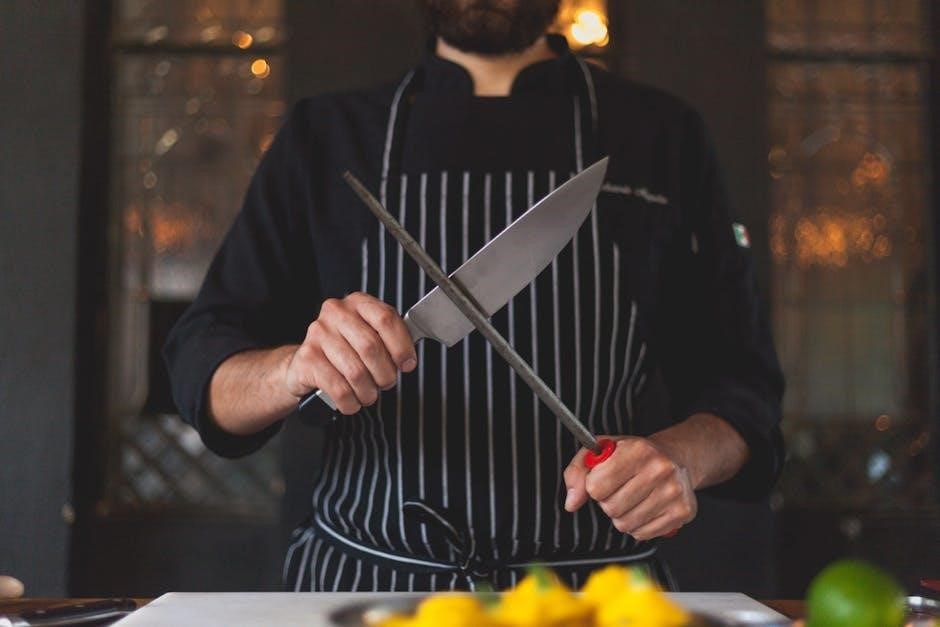
Laser angle indicators are innovative tools that project a laser line to guide the sharpening process. These devices provide visual feedback, ensuring the knife is held at the correct angle. By aligning the laser with the blade’s edge, users can maintain consistency and precision. This technology is particularly useful for achieving sharp, even edges. However, they require manual adjustment to match the desired angle. Laser indicators are a modern solution for those seeking high accuracy and ease of use. They complement traditional methods, offering a reliable way to monitor and maintain the optimal sharpening angle for any knife type, ensuring superior results.
Sharpening Posture and Technique
Proper posture, whether standing or sitting, and consistent angle maintenance are crucial for effective sharpening. Align the knife and stone correctly to achieve optimal results.
Proper Posture
Maintaining proper posture during sharpening is essential for consistency and control. Stand or sit comfortably, ensuring the sharpening stone is at a stable height. Keep your back straight and shoulders relaxed to prevent fatigue. Position the knife at the desired angle, with your dominant hand gripping the handle firmly and your other hand supporting the blade. Ensure the stone is aligned with your body to avoid awkward twists. Proper posture helps maintain the correct sharpening angle, reducing strain and improving precision. Experiment with different heights and angles to find what works best for you, ensuring optimal sharpening results every time.
Correct Stance and Grip
Achieving the correct stance and grip is vital for effective knife sharpening. Stand with feet shoulder-width apart, ensuring balance and stability. Hold the knife with a firm, controlled grip, placing your thumb on the blade’s spine for precision. Your other hand should guide the handle, maintaining consistent pressure. Experiment with different grips to find what feels natural, ensuring the angle guide remains steady. Proper stance and grip minimize fatigue and enhance accuracy, allowing you to sharpen efficiently and safely. This foundation is crucial for maintaining the desired angle and achieving a razor-sharp edge with every stroke.